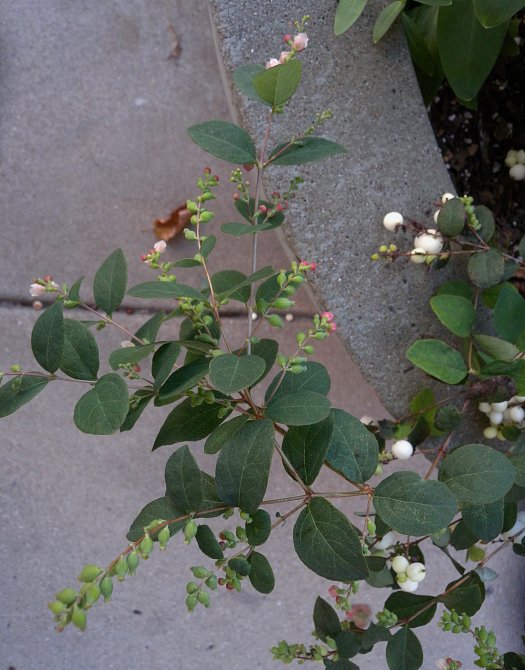
Short clusters or elongated racemes of flowers are produced from the axils of the leaves and terminal shoots. Including both the corolla and inferior ovary, each flower is about 1/3" (8 mm.) long and 1/4" (6 mm.) across, consisting of a light pink or whitish pink bell-shaped corolla with 5 lobes, a shallow light green calyx with 5 shallow teeth, a light green ovary that is hairless and sometimes glaucous, 5 inserted stamens, and an inserted style. The corolla lobes extend to about one-third of its length; these lobes are ovate in shape and ascending. The calyx is light green and hairless. The inferior ovary is ovoid in shape, but somewhat constricted at the base of the calyx. The light green pedicels of the flowers are very short (less than 1/8" or 1–2 mm. long), while other stalks of the inflorescence are light green to reddish purple. The blooming period typically occurs from early to mid-summer for about 1½ months, although it may become extended into autumn under favorable conditions.
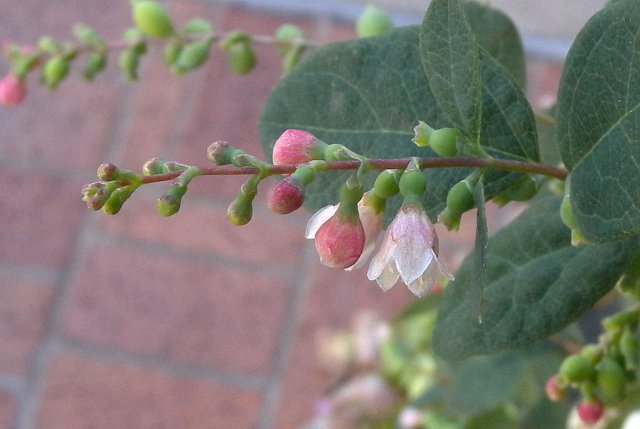
Fertile flowers are replaced by drupes. At maturity, these drupes are 1/3–2/3" (8–16 mm.) across, bright white, globoid in shape, and hairless. Each drupe has a waxy-fleshy interior with a bitter flavor and a pair of nutlets. The nutlets are 4-5 mm. long, bony white, broadly ellipsoid, and slightly flattened in shape. The root system is branching and woody. This shrub can reproduce asexually when its lower stems take root after they contact moist ground (layering).
Cultivation: The preference is full sun to light shade, mesic to dry conditions, and rocky, clay, or loamy soil. This shrub is not difficult to cultivate in gardens, although it has a tendency to become lanky with age. Winter hardiness extends to Zone 4.
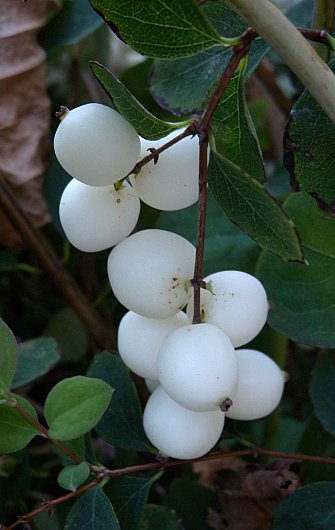
Range & Habitat: This variety of Snowberry (Symphoricarpos albus) is found in the northern half of Illinois, where it is widely scattered and uncommon (see Distribution Map). Most shrubs in the wild have escaped from ornamental gardens and other managed landscapes; these escaped shrubs are the hairless (or nearly hairless) variety of this shrub, Symphoricarpos albus laevigatus. This variety of Snowberry was introduced to Illinois from the Pacific Northwest. Wild shrubs of this variety are typically found in disturbed areas, such as roadside embankments, railroads, and rocky waste areas. The typical variety of Snowberry, Symphoricarpos albus albus, is native to Illinois in only two counties (LaSalle and Kane counties), where it is rare and state-listed as 'endangered.' The native populations of this shrub are found in higher quality habitats, consisting of sandstone bluffs along a river and slopes of a wooded dolomite ravine along a stream.

Faunal Associations: Floral visitors include the Ruby-throated Hummingbird, honeybees, bumblebees, large carpenter bees (Xenocopa virginica), leaf-cutting bees (Megachile spp.), mason bees (Osmia spp.), green metallic bees (Agapostemon spp.), Andrenid bees, Vespid wasps, Syrphid flies, Tachinid flies, miscellaneous butterflies, and Noctuid moths. Among these floral visitors, bees are the most important pollinators. These floral visitors obtain primarily nectar from the flowers, although some of the bees may collect pollen and some of the flies may feed on pollen. Other insects feed destructively on the leaves and other parts of Snowberry (Symphoricarpos albus). These insect feeders include the larvae of leaf-mining flies (Phytomyza albiceps, Paraphytomyza luteoscutellata), an aphid (Aphthargelia symphoricarpi), larvae of the Sulfur Moth (Hesperumia sulphuraria) and White Spring Moth (Lomographa vestaliata), larvae of Sphinx moths (Sphinx vashti, Hemaris diffinis & Hemaris thysbe), and larvae of small leaf-miner moths (Phyllonorycter mariaeella, Phyllonorycter symphoricarpaeella); see Needham et al., 1928; Spencer & Steyskal, 1986; Robinson & Bradley, 1965; Covell (1984/2005); and the Microleps website (2010).
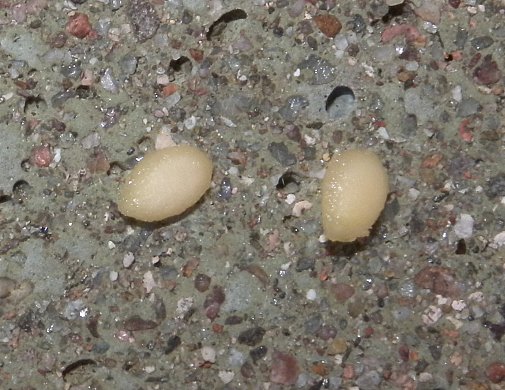
Some vertebrate animals use this shrub as a source of food and/or cover. For example, its white drupes are eaten by the Ruffed Grouse, Ring-necked Pheasant, Greater Prairie Chicken, Bobwhite Quail, American Robin, Cedar Waxwing, Hermit Thrush, Swainson's Thrush, Evening Grosbeak, and Pine Grosbeak (DeGraaf, 2002). The drupes are also eaten by the Black Bear, while White-tailed Deer and Elk browse occasionally on the twigs and leaves (Martin et al., 1951/1961). Vertebrate animals that eat the drupes spread the seeds of this shrub to new areas.
Photographic Location: A large concrete plant container in downtown Urbana, Illinois. The photographed shrub is Symphoricarpos albus laevigatus.
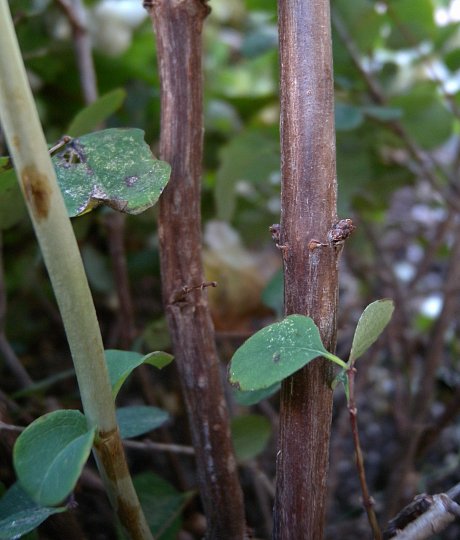
Comments: The variety of Snowberry that is described here, Symphoricarpos albus laevigatus, is not native to Illinois. However, native populations of the typical variety of this shrub, Symphoricarpos albus albus, have been found in 2 counties within the state. The native variety of Snowberry in Illinois differs from the typical garden variety of Snowberry as follows: 1) the native variety in Illinois is a smaller and more compact shrub, typically only ¾–2' tall, 2) its leaves tend to be a little smaller in size and they are more likely to have undulate-crenate margins, 3) its leaf undersides are pubescent, especially along the veins, rather than hairless, 4) its fruits are only 6-8 mm. across, while the typical garden variety of Snowberry has fruits that are 8-16 mm. across, and 5) the autumnal color of the leaves of the native variety is more showy (usually yellow and orange), while the typical garden variety of Snowberry has brownish green leaves during the autumn (Young, 1991). Another shrub that is similar in appearance to Snowberry is Wolfberry (Symphoricarpos occidentalis). Wolfberry can be distinguished by its slightly larger leaves (up to 3½" long), sessile flowers and fruits, more deeply lobed flowers (extending to about one-half of the length of the corolla), and slightly exserted style and stamens. Wolfberry is considered an uncommon native shrub in Illinois, although it is probably adventive at some sites. Wolfberry is typically found in dry sunny places, such as areas along railroads and upland prairies.